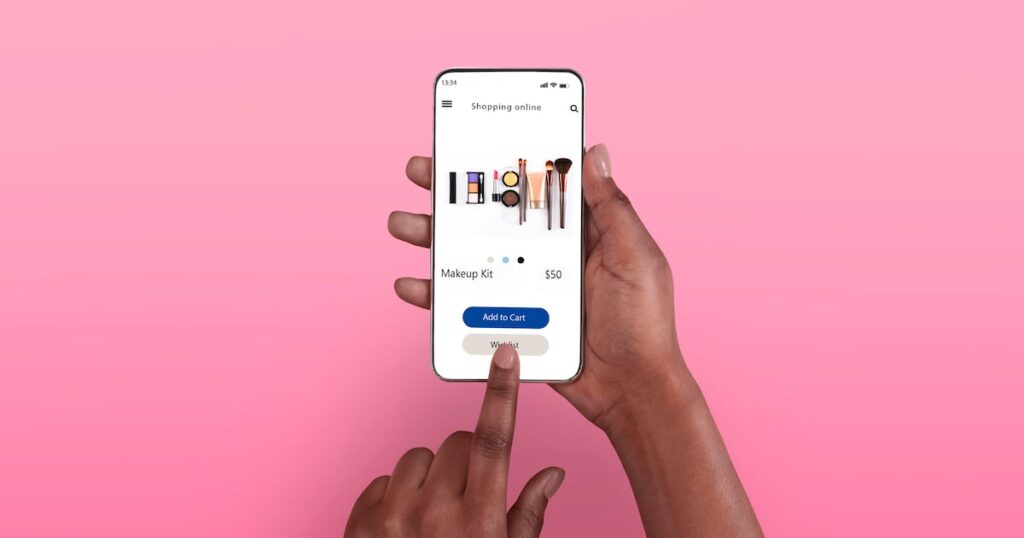[ad_1]

According to market research firm Statista, global e-commerce sales are projected to exceed $7 trillion by 2025. In response, US cosmetics and personal care brands are increasingly adopting localization and strategic planning to tap into international markets and capitalize on this rapid growth.
The 2024 Black Friday/Cyber Monday (BFCM) shopping season showcased how these strategies can drive success: according to a recent company press release, Global-e, a cross-border e-commerce solutions provider, reported a 43% year-over-year uplift in BFCM weekend sales.
This record-breaking growth highlights how US brands can expand their reach and revenue by engaging global consumers. Significant sales increases were reported in markets such as Germany, France, the United Kingdom, the United Arab Emirates, Japan, and Australia, illustrating the growing international appeal of U.S. brands during BFCM.
We spoke to Global-e’s CEO for North America, Matthew Merrilees, for his insights into actionable strategies for refining US manufacturers’ and suppliers’ global e-commerce efforts.
Localization is a pivotal strategy for US cosmetics and personal care brands to compete in international markets. “Offering online consumers, from anywhere in the world, a seamless shopping experience that is localized to their market is crucial to increasing conversion rate, growing sales, and fostering customer trust and retention,” Merrilees explained.
By “localizing the entire customer journey on their website,” he said, brands can provide “consumers worldwide with an optimal buying experience that is tailored and optimized to market characteristics and local shopping preferences.”
Merrilees clarified that “this includes displaying prices and accepting payments in local currencies and via a wide range of payment options, including popular alternative and local options that are presented per market.” By providing shoppers with “a guaranteed final cost of their purchase, including all local import tax and duty fees,” brands can “eliminate unexpected charges and build trust.”
Shipping and returns are equally critical. “Setting the optimal delivery and returns offering can impact conversion rates significantly,” Merrilees said.
For example, he illustrated, “with Global-e, merchants can optimize their shipping proposition and offer customers multiple options at competitive rates, set per market, as well as transparent and easy return processes, including pre-paid returns. This improves trust and satisfaction.”
This year’s BFCM season demonstrated the power of early promotions, with sales momentum beginning as early as the second week of November. “We saw a surge in global e-commerce shopping starting at the beginning of November, led by promotions that ran throughout the month,” Merrilees noted.
For US brands, extending promotional periods can create multiple advantages, such as giving “customers a longer time to deliberate and make purchases, ultimately leading to an overall increase in orders and sales,” Merrilees said.
He also highlighted the cost benefits: “For brands, this longer window offers opportunities to optimize media spending and capitalize on the typically lower media costs in the weeks leading up to Black Friday weekend, as advertising costs during the weekend itself are significantly higher.”
While US brands often focus on domestic sales, the 2024 BFCM season highlighted the value of targeting global markets. Merrilees pointed to strong year-over-year growth in international regions, noting, “The Middle East experienced the most significant year-over-year growth this Black Friday/Cyber Monday season, with sales increasing by 25% after a slower BFCM weekend in 2023.”
He added, “Europe also saw substantial growth, with a 19% year-over-year sales increase.”
For US manufacturers and suppliers, understanding these trends can help guide decisions on where to invest resources. “Many markets around the world experienced a year-on-year increase in sales over the 2024 BFCM weekend, reflecting the growing global nature of BFCM,” Merrilees said.
Global-e’s partnerships with top US beauty brands such as Glossier, Kylie Cosmetics, and Fenty Beauty demonstrate the importance of tailoring strategies to the specific demands of the cosmetics and personal care market. “By analyzing billions of sessions per market vertical and AOV, we provide beauty brands with proprietary local market insights to help refine their global strategies, enhance their value proposition, and drive further growth,” Merrilees shared.
These insights are particularly valuable for US brands looking to optimize their international operations. “Setting the shipping proposition, for example, can be critical and should be weighed carefully per each market, as it not only impacts conversion but also brand profitability,” Merrilees explained.
“This includes setting the free shipping threshold, the shipping methods offered in each market, and even communicating the delivery times,” he clarified, adding that “whether you decide to underpromise and overdeliver or try to meet short delivery windows will impact conversion.”
Tax and duty considerations also play a significant role. “Brands can leverage data-based best practices to optimize their proposition, whether to embed the taxes and duties in product prices or present them clearly at checkout,” Merrilees advised.
To succeed in an increasingly competitive global market, Merrilees outlined three key strategies for US cosmetics and personal care brands:
- Think Globally, Sell Globally: “Expanding your e-commerce worldwide creates new opportunities and additional revenue streams,” Merrilees said. “Once the right infrastructure is in place, brands should not limit their e-commerce to a few markets or specific regions.”
- Optimize Your Global Proposition: “Building wisely your global proposition would not only translate into higher conversion, sales, and a wider customer base but also impact your bottom line and allow you to preserve margins and achieve profitable growth,” he added.
- Invest Marketing Dollars Wisely: “Identify markets with strong growth potential and invest in marketing efforts accordingly,” Merrilees emphasized, recommending a data-driven approach to prioritize high-opportunity markets.
By embracing these strategies and leveraging lessons from the 2024 BFCM season, US cosmetics and personal care manufacturers can unlock significant growth opportunities in international markets, setting the stage for long-term success in 2025 and beyond.
[ad_2]
Source link

